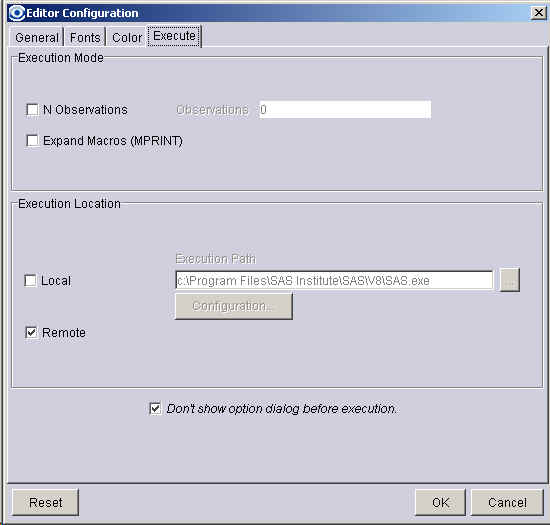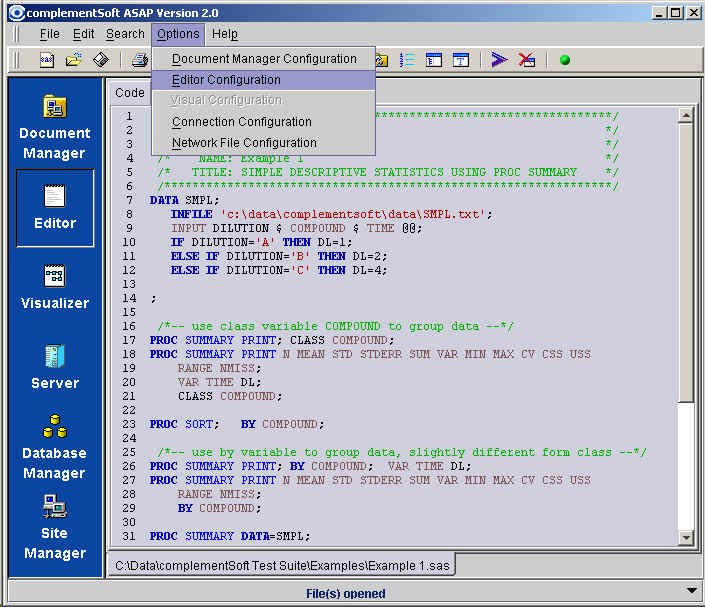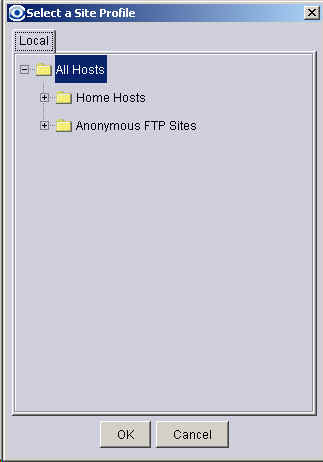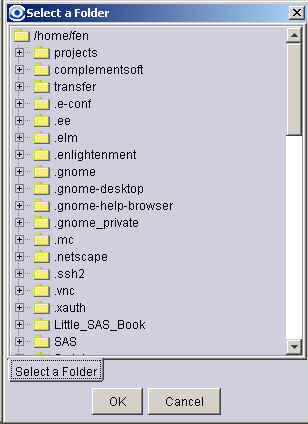
How do I remote execute a SAS® program?
Scenario #2
The SAS® program file (e.g., Example.sas) resides on a local workstation.
Assumptions
| The SAS® program file (e.g., Example.sas) resides on a local workstation and you want
to execute it on a remote server (UNIX, Windows NT/2000) Server A (i.e., named and
configured using the Site Manager. Please refer to the Naming
and Configuring a Server with the Site Manager for details on how to name and
configure a server). | |
| SAS® is installed on Server A and the user can execute as SAS® program by issuing sas - <option> program_name.sas. |
Step 1:
Open (double click the file in the Document Manager) the the program file Example.sas. ASAP ™ will automatically navigates to the Editor screen, and displays the program in an editable mode.
Step 2:
Use the Execute tab in the Enhanced Editor Options window to specify the Execution Mode and Execution Location. In this case, the Execution Location should be set to remote.
To activate the Enhanced Editor Option window (shown above), simply select the Editor Configuration menu item under the Option menu.
Step 3:
Click the Execute Program button ![]() on the Editor's tool
bar. The Select a Site Profile window (similar to Site Manager) will pop-up.
Simply drill down and select the remote
server that you want your code to run on and click OK.
on the Editor's tool
bar. The Select a Site Profile window (similar to Site Manager) will pop-up.
Simply drill down and select the remote
server that you want your code to run on and click OK.
Step 4:
ASAP ™ will then pop-up a window (similar to the Remote panel of the Document Manager) showing the directory structure in the server that you selected in Step 3. Select the directory that you want your code to execute in and click OK.
Step 5:
ASAP ™ will automatically navigates to the Server (Remote Execute) screen, connect to the server, and execute the execution script (define in Server A's profile using the Site Manager). You will also be able to see the execution in action.
Step 6:
Once the execution has completed. Type in the word "exit" at the system prompt if you have not setup the post execution script for the server in the Site Manager.
ASAP ™ will automatically navigate back to the Editor screen. Behind the scenes, it will automatically transfer the log file and the lst file to the same directory that you have copied the SAS® program file (Example.sas) to in Step 1.
Once both the log and lst files have been transferred, ASAP ™ will then open them and display them on separate tabs in the Editor screen.
![]()



